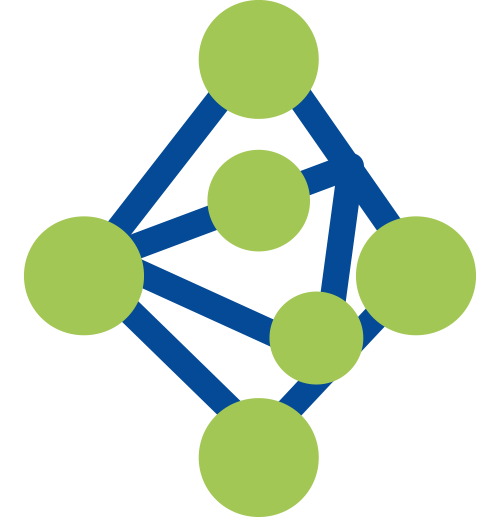In the ever-evolving realm of biotechnology and molecular biology, the ability to design and construct custom variant libraries has emerged as a game-changer. These meticulously crafted collections of genetic variants play a pivotal role in advancing scientific research, enabling groundbreaking discoveries, and driving innovation across diverse fields. From unraveling the intricacies of protein structure and function to engineering novel enzymes and therapeutic agents, custom variant libraries have become an indispensable tool for researchers and scientists worldwide.
This comprehensive guide delves into the intricate world of custom variant library design, providing a deep understanding of the underlying principles, methodologies, and best practices. By combining insights from industry experts, cutting-edge research, and real-world case studies, we aim to equip you with the knowledge and skills necessary to navigate this complex yet rewarding domain.
Whether you are a seasoned researcher seeking to optimize your experimental workflows or a budding scientist eager to explore the frontiers of molecular engineering, this article will serve as your ultimate companion, empowering you to unlock the full potential of custom variant libraries.
Introduction to Custom Variant Libraries
Custom variant libraries are meticulously designed collections of genetic sequences that harbor intentional modifications or variations from a reference sequence. These libraries are engineered to explore the vast landscape of potential genetic diversity, enabling researchers to investigate the functional consequences of specific mutations, optimize desired traits, or uncover novel properties.
At the core of custom variant library design lies the principle of combinatorial mutagenesis, which involves the systematic introduction of mutations at predetermined positions within a target gene or sequence. By carefully controlling the type, location, and combination of mutations, researchers can generate libraries encompassing a wide range of genetic variants, each with unique characteristics and potential applications.
The power of custom variant libraries lies in their ability to accelerate the discovery and optimization processes by allowing researchers to explore a vast number of genetic permutations in a controlled and efficient manner. Rather than relying on random mutagenesis or time-consuming trial-and-error approaches, custom variant libraries enable a targeted and systematic exploration of the genetic landscape.
Principles of Variant Library Design
Defining Objectives and Experimental Goals
Before embarking on the journey of designing a custom variant library, it is crucial to clearly define the objectives and experimental goals. Are you aiming to optimize a specific protein function, such as enzyme activity or substrate binding affinity? Or perhaps your goal is to explore the structural and functional consequences of mutations within a particular gene or regulatory region?
Clearly articulating your objectives will guide the subsequent steps in the design process, ensuring that the resulting library is tailored to your specific needs and maximizes the chances of achieving your desired outcomes.
Considerations for Target Genes and Proteins
The selection of the target gene or protein is a critical step in the design process. Factors such as the availability of structural information, existing knowledge about functional domains or active sites, and the potential impact of mutations on the overall protein stability and folding must be carefully considered.
Additionally, it is essential to assess the feasibility of expressing and purifying the target protein in a suitable host system, as this will influence the downstream experimental procedures and analysis.
Strategies for Mutagenesis and Diversification
Once the target gene or protein has been identified, the next step is to determine the appropriate mutagenesis strategy for generating the desired genetic diversity. Several approaches are available, each with its own strengths and limitations:
- Site-Saturation Mutagenesis: This technique involves systematically substituting each amino acid residue within a specific region or domain with all possible amino acid variants. This approach is particularly useful for exploring the functional significance of individual residues or identifying hotspots for protein engineering.
- Random Mutagenesis: In this method, random mutations are introduced throughout the target gene or protein, resulting in a diverse library of variants. While this approach can uncover unexpected and novel properties, it may also generate a high proportion of non-functional or destabilized variants, requiring more extensive screening and selection processes.
- Rational Design: By leveraging existing knowledge about protein structure, function, and evolutionary relationships, researchers can rationally design specific mutations or combinations of mutations to explore their effects. This approach is often used in conjunction with computational modeling and simulations to guide the design process.
- Combinatorial Mutagenesis: This strategy involves systematically combining multiple mutations within a single library, allowing for the exploration of synergistic or compensatory effects. This approach is particularly powerful for optimizing complex traits or engineering proteins with multiple desired properties.
The choice of mutagenesis strategy will depend on the specific objectives, available resources, and the level of prior knowledge about the target gene or protein.
Methodologies for Variant Library Construction
Oligonucleotide Synthesis and Assembly
One of the most widely used techniques for constructing custom variant libraries is oligonucleotide synthesis and assembly. This approach involves the chemical synthesis of short DNA oligonucleotides, typically ranging from 20 to 100 base pairs in length, which are designed to incorporate the desired mutations or variations.
These oligonucleotides are then assembled into full-length gene constructs using various molecular biology techniques, such as polymerase chain reaction (PCR), overlap extension PCR, or gene synthesis. The resulting gene constructs can be cloned into appropriate expression vectors for subsequent protein expression and characterization.
Several companies, such as Dynegene and GenScript, offer custom oligonucleotide synthesis and gene assembly services, enabling researchers to outsource this process or obtain pre-designed libraries tailored to their specific needs.
Enzymatic Approaches
In addition to oligonucleotide synthesis, enzymatic approaches have emerged as powerful tools for generating custom variant libraries. These methods leverage the capabilities of specialized enzymes to introduce mutations or create genetic diversity within target sequences.
One widely used technique is error-prone PCR, which involves the intentional introduction of errors during the PCR amplification process. By modulating the reaction conditions, such as increasing the concentration of manganese ions or using error-prone DNA polymerases, researchers can control the rate and distribution of mutations within the amplified DNA sequences.
Another enzymatic approach is DNA shuffling, which involves the fragmentation and reassembly of related gene sequences to create novel combinations of mutations. This technique is particularly useful for exploring the synergistic effects of multiple mutations or for generating libraries with increased sequence diversity.
Computational Design and Modeling
With the advent of powerful computational resources and advanced algorithms, computational design and modeling have become invaluable tools in the field of custom variant library design. These approaches leverage structural information, bioinformatics data, and predictive models to guide the selection and prioritization of mutations or variant combinations.
Computational protein design algorithms can be used to identify potential mutations that are likely to improve desired properties, such as stability, binding affinity, or catalytic activity. These algorithms often employ energy minimization techniques, molecular dynamics simulations, and machine learning models to evaluate the potential impact of mutations on protein structure and function.
Additionally, bioinformatics tools and databases, such as the Protein Data Bank PDB and the UniProt Knowledgebase, provide valuable resources for analyzing sequence and structural information, identifying conserved regions, and exploring evolutionary relationships among proteins.
By integrating computational design and modeling approaches with experimental techniques, researchers can streamline the variant library design process, reduce the search space, and increase the likelihood of identifying promising candidates for further characterization and optimization.
Quality Control and Validation
Sequence Verification and Analysis
Once the custom variant library has been constructed, it is crucial to perform thorough sequence verification and analysis to ensure the accuracy and integrity of the library. This step involves sequencing a representative subset or the entire library to confirm the presence of the desired mutations and identify any potential errors or unintended variations.
Bioinformatics tools and pipelines, such as the Variant Library Annotation Tool VaLiAnT, can be employed to analyze and annotate the sequencing data, providing valuable insights into the distribution of mutations, potential functional consequences, and overall library diversity.
Functional Screening and Assays
In addition to sequence verification, functional screening and assays are essential for evaluating the performance and characteristics of the individual variants within the library. These assays can range from simple colorimetric or fluorescence-based readouts to more complex biochemical or cell-based assays, depending on the specific objectives and target properties of interest.
High-throughput screening platforms, such as robotic liquid handling systems and automated plate readers, can significantly accelerate the screening process, enabling the rapid evaluation of thousands or even millions of variants in a relatively short time frame.
Bioinformatics Tools and Pipelines
The analysis and interpretation of the vast amount of data generated from custom variant library screening and characterization require sophisticated bioinformatics tools and pipelines. These computational resources enable researchers to process and integrate various types of data, including sequencing data, functional assay results, structural information, and computational predictions.
Bioinformatics tools can be used to identify patterns and correlations between mutations and observed phenotypes, predict the potential impact of mutations on protein structure and function, and prioritize promising candidates for further investigation or optimization.
Additionally, machine learning algorithms and artificial intelligence (AI) techniques are increasingly being employed to analyze and interpret the complex data generated from custom variant library experiments, enabling the discovery of non-obvious relationships and the generation of predictive models for future library design and engineering efforts.
Applications of Custom Variant Libraries
Protein Engineering and Directed Evolution
One of the primary applications of custom variant libraries is in the field of protein engineering and directed evolution. By generating libraries of protein variants, researchers can explore the sequence-function landscape and identify mutations or combinations of mutations that confer desired properties, such as improved catalytic activity, increased stability, or altered substrate specificity.
Directed evolution experiments involve iterative cycles of mutagenesis, screening, and selection, where the most promising variants are carried forward to the next round of mutagenesis and screening. This process mimics natural evolution but accelerates it by orders of magnitude, enabling the rapid optimization of proteins for various applications, including biocatalysis, therapeutic protein development, and biomaterial design.
Therapeutic Antibody Development
Custom variant libraries have played a pivotal role in the development of therapeutic antibodies, which are widely used in the treatment of various diseases, including cancer, autoimmune disorders, and infectious diseases.
By generating libraries of antibody variants, researchers can optimize properties such as binding affinity, specificity, and stability, as well as engineer antibodies with desired effector functions or improved pharmacokinetic profiles.
Techniques such as phage display, yeast display, and mammalian cell display are commonly employed to screen and select antibody variants from custom libraries, enabling the identification of lead candidates for further development and clinical evaluation.
Metabolic Pathway Optimization
Custom variant libraries have found applications in the optimization of metabolic pathways for various biotechnological applications, including the production of biofuels, pharmaceuticals, and high-value chemicals.
By generating libraries of enzyme variants involved in key metabolic pathways, researchers can identify mutations that improve enzyme activity, substrate specificity, or overall pathway efficiency. These optimized enzymes can then be introduced into host organisms, such as bacteria or yeast, to enhance the production of desired metabolites or improve the overall metabolic flux.
This approach has been particularly valuable in the field of synthetic biology, where engineered metabolic pathways are designed and optimized for the production of novel compounds or the synthesis of complex molecules.
Synthetic Biology and Genome Editing
The advent of powerful genome editing tools, such as CRISPR-Cas9, has opened up new avenues for the application of custom variant libraries in synthetic biology and genome engineering.
By generating libraries of guide RNA (gRNA) sequences or donor DNA templates, researchers can systematically introduce targeted mutations or modifications into specific genomic loci. This approach, known as saturation genome editing (SGE), enables the functional analysis of genetic variants at single-nucleotide resolution, providing insights into the roles of specific genetic elements and their potential applications in various fields, including disease modeling, drug development, and evolutionary studies.
Additionally, custom variant libraries can be used to engineer synthetic genetic circuits or regulatory networks, enabling the precise control and modulation of gene expression patterns for various applications, such as biosensing, metabolic engineering, and therapeutic gene delivery.
Case Studies and Real-World Examples
To illustrate the power and versatility of custom variant libraries, let's explore some real-world examples and case studies:
- Engineering Thermostable Enzymes: Researchers at the National Renewable Energy Laboratory (NREL) used a combination of computational design and directed evolution to engineer a highly thermostable variant of a cellulase enzyme. By generating a custom variant library and screening for improved thermal stability, they identified a variant with a melting temperature over 30°C higher than the wild-type enzyme. This thermostable cellulase has potential applications in the production of biofuels from cellulosic biomass, enabling more efficient enzymatic hydrolysis at elevated temperatures.
- Optimizing Therapeutic Antibodies: Genentech, a leading biotechnology company, employed phage display and yeast display techniques to generate custom variant libraries of therapeutic antibodies targeting various disease targets. By screening these libraries, they identified antibody variants with improved binding affinities, enhanced effector functions, and optimized pharmacokinetic properties. One notable example is the development of Herceptin (trastuzumab), a monoclonal antibody used in the treatment of HER2-positive breast cancer, which was engineered using custom variant library approaches.
- Metabolic Pathway Engineering: Researchers at the Joint BioEnergy Institute (JBEI) used custom variant libraries to optimize the mevalonate pathway in Escherichia coli for the production of biofuels and bioproducts. By generating libraries of enzyme variants involved in this pathway and screening for improved metabolic flux, they identified a combination of mutations that increased the production of mevalonate, a key precursor for various isoprenoid-derived compounds.
- Genome Editing with CRISPR-Cas9: Scientists at the Broad Institute of MIT and Harvard employed saturation genome editing (SGE) to generate custom variant libraries of guide RNA (gRNA) sequences targeting the human BCL11A gene. By systematically introducing mutations into the gRNA sequences and evaluating their effects on gene editing efficiency, they identified optimized gRNA variants that significantly improved the precision and efficacy of CRISPR-Cas9-mediated gene editing in human cells.
- Directed Evolution of Fluorescent Proteins: Researchers at the University of California, San Diego, used directed evolution techniques to generate custom variant libraries of fluorescent proteins. By screening these libraries for improved brightness, photostability, and spectral properties, they developed a series of enhanced fluorescent proteins, such as mNeonGreen and mScarlet, which have found widespread applications in live-cell imaging, biosensing, and protein labeling.
These case studies demonstrate the versatility and impact of custom variant libraries across various fields, including biofuel production, therapeutic development, metabolic engineering, genome editing, and fluorescent protein engineering. By leveraging the power of these libraries, researchers can accelerate the discovery and optimization of novel biomolecules, enzymes, and genetic elements, driving innovation and advancing scientific knowledge.
Best Practices and Emerging Trends
As the field of custom variant library design continues to evolve, it is essential to stay abreast of the latest best practices and emerging trends. Here are some key considerations and developments to keep in mind:
- Automation and High-Throughput Screening: The integration of automated liquid handling systems, robotic platforms, and high-throughput screening technologies has become increasingly important for efficient and scalable variant library construction and screening. These technologies enable the rapid evaluation of vast numbers of variants, accelerating the discovery and optimization processes.
- Microfluidics and Single-Cell Analysis: Microfluidic devices and single-cell analysis techniques are gaining traction in the field of custom variant library design. These approaches allow for the precise manipulation and analysis of individual cells or molecules, enabling the study of rare or low-abundance variants and providing insights into cellular heterogeneity and population dynamics.
- Machine Learning and Artificial Intelligence: The application of machine learning and artificial intelligence (AI) techniques is revolutionizing the design and analysis of custom variant libraries. These computational approaches can be used to identify patterns and correlations within large datasets, predict the functional consequences of mutations, and guide the rational design of variant libraries.
- Integrating Multi-Omics Data: The integration of multi-omics data, such as transcriptomics, proteomics, and metabolomics, is becoming increasingly important for understanding the complex relationships between genotype and phenotype. By combining custom variant library data with multi-omics analyses, researchers can gain a more comprehensive understanding of the molecular mechanisms underlying observed phenotypes.
- Collaborative Efforts and Data Sharing: The complexity and scale of custom variant library design projects often necessitate collaborative efforts and data sharing among research groups and institutions. Initiatives such as the Enzyme Function Initiative (EFI) and the Protein Ensemble Database (PED) facilitate the sharing of data, protocols, and resources, fostering a more collaborative and open research environment.
- Ethical Considerations and Biosafety: As the applications of custom variant libraries expand, it is crucial to consider the ethical implications and biosafety concerns associated with these technologies. Robust guidelines and regulatory frameworks should be established to ensure the responsible and safe use of custom variant libraries, particularly in areas such as gene editing, synthetic biology, and therapeutic development.
- Sustainable and Environmentally Friendly Approaches: The design and construction of custom variant libraries should also consider the environmental impact and sustainability of the processes involved. Efforts should be made to develop more eco-friendly techniques, such as the use of renewable resources, minimizing waste generation, and reducing energy consumption.
By embracing these best practices and emerging trends, researchers can stay at the forefront of custom variant library design, driving innovation and advancing scientific knowledge while ensuring the responsible and ethical application of these powerful technologies.
Conclusion
Custom variant libraries revolutionize biotechnology by enabling exploration of vast genetic diversity. This guide equips researchers with principles and methods for designing these powerful tools. Embracing emerging trends like automation, AI, and collaborative efforts will drive further innovation. Responsibly harnessing custom libraries' potential unlocks solutions across therapeutics, biofuels, enzymes, and understanding fundamental biology. Seize this opportunity to shape biotechnology's future through custom variant library design.
 NGSHybridization Capture DNA Probe QuarStar Human All Exon Probes 4.0 (Tumor) QuarStar Human All Exon Probes 4.0 (Standard) QuarStar Liquid Pan-Cancer Panel 3.0 QuarStar Pan-Cancer Lite Panel 3.0 QuarStar Pan-Cancer Fusion Panel 1.0 QuarStar Pan Cancer Panel 1.0 Hybridization Capture RNA Probe QuarXeq Human All Exon Probes 3.0 HRD panel Library Preparation DNA Library Preparation Kit Fragmentation Reagent mRNA Capture Kit rRNA Depletion Kit QuarPro Superfast T4 DNA Ligase Hybridization Capture QuarHyb Super DNA Reagent Kit QuarHyb DNA Plus 2 Reagent Kit QuarHyb DNA Reagent Kit Plus QuarHyb One Reagent Kit QuarHyb Super Reagent Kit Pro Dynegene Adapter Family Dynegene Blocker Family Multiplex PCR QuarMultiple BRCA Amplicon QuarMultiple PCR Capture Kit 2.0 PathoSeq 450 Pathogen Library Corollary Reagent Streptavidin magnetic beads Equipment and Software The iQuars50 NGS Prep System
NGSHybridization Capture DNA Probe QuarStar Human All Exon Probes 4.0 (Tumor) QuarStar Human All Exon Probes 4.0 (Standard) QuarStar Liquid Pan-Cancer Panel 3.0 QuarStar Pan-Cancer Lite Panel 3.0 QuarStar Pan-Cancer Fusion Panel 1.0 QuarStar Pan Cancer Panel 1.0 Hybridization Capture RNA Probe QuarXeq Human All Exon Probes 3.0 HRD panel Library Preparation DNA Library Preparation Kit Fragmentation Reagent mRNA Capture Kit rRNA Depletion Kit QuarPro Superfast T4 DNA Ligase Hybridization Capture QuarHyb Super DNA Reagent Kit QuarHyb DNA Plus 2 Reagent Kit QuarHyb DNA Reagent Kit Plus QuarHyb One Reagent Kit QuarHyb Super Reagent Kit Pro Dynegene Adapter Family Dynegene Blocker Family Multiplex PCR QuarMultiple BRCA Amplicon QuarMultiple PCR Capture Kit 2.0 PathoSeq 450 Pathogen Library Corollary Reagent Streptavidin magnetic beads Equipment and Software The iQuars50 NGS Prep System Primers and Probes
Primers and Probes RNA SynthesissgRNA miRNA siRNA
RNA SynthesissgRNA miRNA siRNA



 Gene Synthesis
Gene Synthesis Oligo Pools
Oligo Pools CRISPR sgRNA Library
CRISPR sgRNA Library Antibody Library
Antibody Library Variant Library
Variant Library


 Tel: 400-017-9077
Tel: 400-017-9077 Address: Floor 2, Building 5, No. 248 Guanghua Road, Minhang District, Shanghai
Address: Floor 2, Building 5, No. 248 Guanghua Road, Minhang District, Shanghai Email:
Email: Tel: 400-017-9077
Tel: 400-017-9077 Address: Floor 2, Building 5, No. 248 Guanghua Road, Minhang District, Shanghai
Address: Floor 2, Building 5, No. 248 Guanghua Road, Minhang District, Shanghai Email:
Email: 







